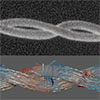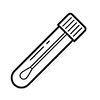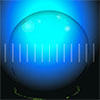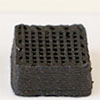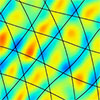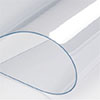Dec 20, 2021 (Nanowerk News) Scientists have used state-of-the-art 3D printing and microscopy to provide a new glimpse of what happens when taking magnets to three-dimensions on the nanoscale – 1000 times smaller than a human hair. The international team led by Cambridge University’s Cavendish Laboratory used an advanced 3D...
An aptasensor has been designed to detect the SARS-CoV-2 virus in saliva
Dec 20, 2021 (Nanowerk News) Scientists at the Universidad Carlos III de Madrid (UC3M) have developed the first photo-electrochemical aptasensor that detects the SARS-CoV-2 virus in a saliva sample. This sensor, which uses aptamers (a type of artificial antibody), is more sensitive that antigen-based sensors and detects the virus more...
Scientists boost the accuracy of optical microscopes to image microdroplets in flight
Dec 20, 2021 (Nanowerk News) Sneezes, rain clouds, and ink jet printers: They all produce or contain liquid droplets so tiny it would take several billion of them to fill a liter bottle. Measuring the volume, motion and contents of microscopic droplets is important for studying how airborne viruses spread...
Phosphorene nanoribbons live up to hype in first demonstration
Dec 20, 2021 (Nanowerk News) Phosphorene nanoribbons (PNRs) are ribbon-like strands of the 2D material phosphorous, which, similar to graphene, are made of single-atom-thick layers of atoms. PNRs were first produced in 2019, and hundreds of theoretical studies have predicted how their properties could enhance all kinds of devices, including...
Shellac for environmentally friendly printed circuits
Dec 20, 2021 (Nanowerk News) More precise, faster, cheaper: Researchers all over the world have been working for years on producing electrical circuits using additive processes such as robotic 3-printing (so-called robocasting) – with great success, but this is now becoming a problem. The metal particles that make such "inks"...
Enhancing charge density waves by moire engineering in twisted heterostructures
Dec 20, 2021 (Nanowerk News) When stacking two layers of van der Waals (vdW) materials, a moiré pattern is produced by the modulation of the long wavelength periodic potential. The moiré pattern is a promising means in engineering both the atomic geometry and electronic structure. A variety of emergent phenomena...
Soft semiconductors that stretch like human skin can detect ultra-low light levels
Dec 20, 2021 (Nanowerk News) Semiconductors are moving away from rigid substrates, which are cut or formed into thin discs or wafers, to more flexible plastic material and even paper thanks to new material and fabrication discoveries. The trend toward more flexible substrates has led to fabrication of numerous devices,...

